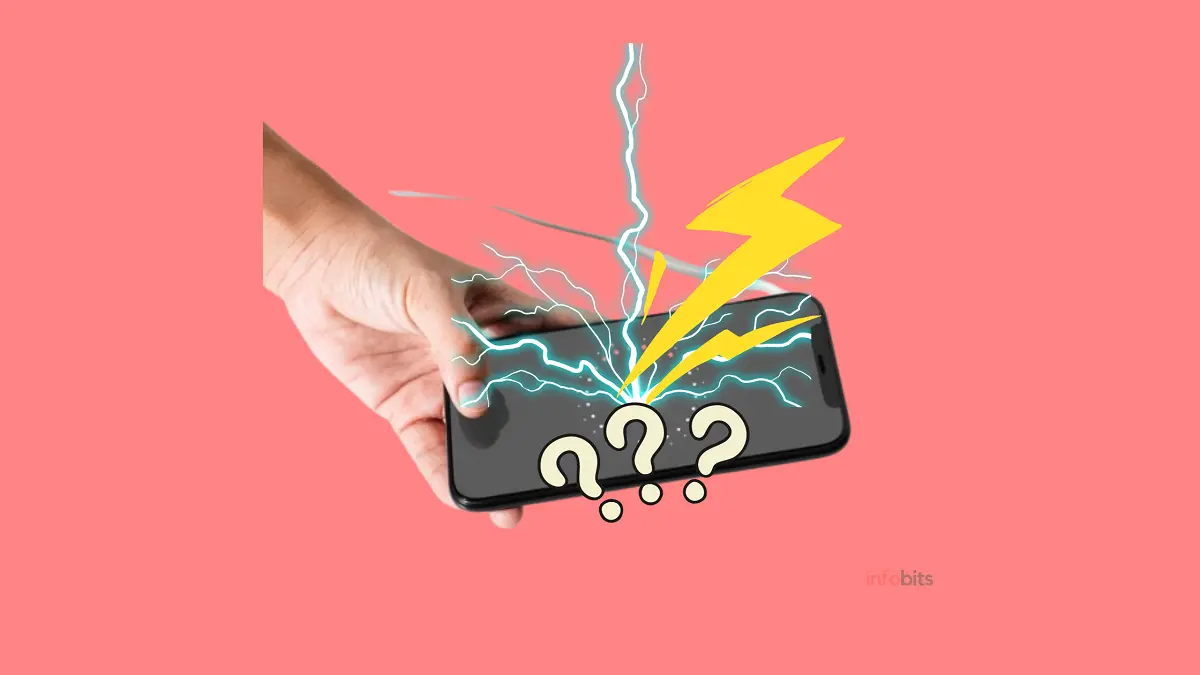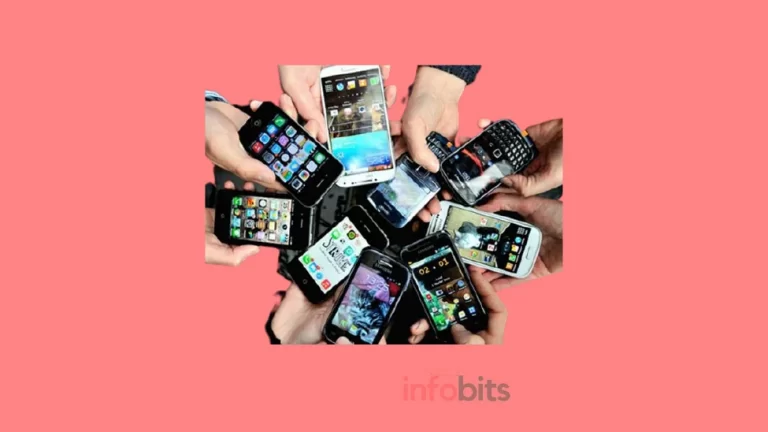Is It Safe to Use a Phone During Lightning?
While we appreciate the advantages that come with modern technology, it is vital to be mindful of the risks that may accompany our digitally linked lives. One such concern is the safety of using a phone during a lightning storm.
Myths and misunderstandings commonly confuse our understanding of the dangers posed by lightning strikes and the use of electrical or electronic devices. Most mobile phone users have one doubt in their thoughts.
Is it safe to use a cell phone during a lightning strike?
The simple answer to this question is yes. During lighting, you can use a cell phone or a cordless phone. However, you must adhere to certain restrictions, which will be discussed in more detail in this post.
It’s also a good idea to avoid using wired landline phones during a thunderstorm. This is because landline phones linked to the telephone line could carry electricity from a lightning strike, posing a risk to the user.
This article seeks to provide some insight into the subject by arguing popular ideas, evaluating the safety of phone usage during lightning storms, and providing practical suggestions and expert advice to help find a balance between connectivity and personal safety.
1. Understanding the Risks of Lightning Strikes
– The dangers of lightning strikes
We’ve all heard the phrase, “When thunder roars, go indoors.” But have you ever considered why lightning is such a danger?
Lightning strikes are both visually fascinating and extremely hazardous. They may cause serious injuries, property damage, and even fatalities.
To safeguard our safety, we must first understand the dangers of lightning strikes.
– Importance of being aware of lightning safety
Being mindful of lightning safety is critical, whether you’re hiking, playing sports, or simply enjoying the great outdoors.
Thunderstorms can happen fast and catch us in no time, so knowing how to protect ourselves and our assets in these potentially hazardous conditions is critical.
We can stay safe and enjoy our activities without fear of lightning strikes if we recognize risks and take the required safeguards.
2. The Science Behind Lightning and its Potential Hazards
– How lightning is formed
Lightning is an electrical discharge that happens naturally during thunderstorms. The accumulation and discharge of electrical energy in the atmosphere cause it.
When storm clouds charge, an electron flow finds a way to the earth or another cloud, ending in a lightning discharge.
We call this powerful outpouring of electrical energy lightning.
– Understanding the power and voltage of lightning
Lightning has incredible power and voltage. A single lightning flash may create temperatures five times those of the sun’s surface and emit around one billion volts of electrical potential.
If we are in the wrong location at the wrong moment, its great strength may easily cause damage, injury, and even death.
– Risks associated with lightning strikes
Aside from the immediate danger of being hit by lightning, lightning strikes pose other concerns. Lightning-caused electrocution, burns, and injuries are all too prevalent.
Furthermore, lightning may generate electrical surges that harm gadgets such as phones and other electronic equipment.
Lightning strikes must be taken seriously, and steps must be taken to protect ourselves and the things we own.
3. Can Lightning Strike While Using a Phone?
– Addressing misconceptions about mobile phone use and lightning
Using a phone during a lightning storm is widely assumed to enhance your chances of being struck. In the case of mobile phones or cordless phones, however, this is a rumour.
Does mobile attract lightning?
Lightning is not adverse to technology, and using a cell phone during a lightning will not attract lightning strikes. Don’t worry, your phone is not a lightning magnet!
It should be emphasized, however, that this finding only applies to mobile phones and other forms of cordless phones that are not hooked to an outlet.
But, is it safe to use mobile data during lightning?
The above explanation applies to those who wonder if using mobile data during lightning strikes is safe. This means that using mobile data during lightning will not cause major issues if you are not outdoors.
Corded phones, on the other hand, should be avoided when lightning is present. Because of its connection to an outside wire, using a landline during a thunderstorm is never safe.
The lightning voltage could penetrate through the wire and damage the person utilizing the phone.
– Exploring the reality of lightning strikes and electronic devices
While using a mobile phone does not increase the probability of getting struck by lightning, it is worth mentioning that lightning may produce electrical surges that can harm connected electrical or electronic devices.
To reduce this danger, disconnect your phone from its charger during a storm and avoid using it while it is charging. It is also not a good idea to call someone who is receiving your phone calls via a wired phone.
Taking these easy actions will help protect your phone from lightning-induced power surges.
4. Evaluating the Safety of Using Phones during Lightning Storms
– Factors influencing the safety of using phones during storms
A few aspects come into play when it comes to using phones during lightning storms. The first consideration is location.
If you’re outside during a thunderstorm, it’s often better to seek a closed place or building and avoid using your phone entirely.
However, if you’re indoors and employing basic safety precautions, such as lightning arrestors for the structure and surge protectors in the wiring, using your phone during a storm is quite safe.
– Examining the risks versus benefits of phone use in lightning-prone areas
The hazards and advantages of using a phone during a storm should be carefully examined for individuals who live in lightning-prone locations.
While being connected is appealing, it is critical to prioritize personal safety. If you don’t need to use your phone right away, it’s advisable to wait until the storm passes to prevent any potential dangers.
However, if an emergency arises or you must remain connected for safety concerns, using your phone minimally indoors should be pretty safe.
Understanding the dangers of lightning strikes is critical for our safety.
While beliefs about cell phone use attracting lightning have been clarified, we must always take steps to safeguard our electronic equipment from possible harm caused by electrical surges.
Always go on the side of caution and point out personal safety during thunderstorms.
5. Practical Tips for Minimizing Risks when Using Phones Outdoors during Lightning
– Best practices for phone usage during lightning storms
When using your phone outside during a lightning storm, it’s best to stay on the side of caution. While it may be tempting to check your messages or take a quick selfie, it is more important to prioritize your safety.
During a thunderstorm, avoid using your phone unless necessary.
– Precautions to take when using a phone outdoors
There are a few precautions you may take if you must use your phone outside during a lightning storm.
To begin, avoid open locations such as plain lands or golf courses since they are more prone to lightning strikes.
To protect yourself from potential injury, seek cover behind a solid building or in a completely enclosed vehicle.
– Safe locations to use a phone during lightning
If you must use your phone during a thunderstorm, make sure you do it in a safe area. It is always safer to stay indoors and away from windows or open doors.
If you can’t locate an indoor area, seek out a low-lying spot away from trees, poles, and other towering things that might attract lightning.
Remember that your safety should always come first, regardless of how you use your phone.
6. What to Do if Caught in a Lightning Storm with a Phone
– Steps to follow if caught outdoors with a phone during lightning
If you’re trapped outside with your phone during a lightning storm, you must act immediately and take the required safeguards.
First and foremost, seek an immediate, safe place. Stay away from rising things and bodies of water.
If you cannot locate shelter, sit low with your feet together and your hands protecting your ears to reduce your chance of harm.
– Ensuring personal safety while using a phone during a storm
While it’s normal to want to use your phone during a storm to call for support or stay connected, your safety should always come first.
Remember that using your mobile phone does not increase your chances of being struck by lightning. But if feasible, use your phone only while you are in a safe indoor environment.
7. Expert Advice and Recommendations for Staying Safe during Stormy Weather
– Insights from meteorologists on staying safe during lightning storms
Meteorologists advise people to remain indoors during thunderstorms. They advise against engaging in activities that enhance your chances of getting hit by lightning, such as using electronic devices outdoors.
It is preferable to stay in a secure area until the lightning threat has passed.
Meteorologists also disprove the myth that cell phones attract lightning, according to John Jensenius, lightning safety specialist for the National Weather Service in the US.
If a person is struck by lightning while carrying a cell phone, the phone will likely melt or burn. People have blamed the cell phone for this, according to Jensenius, although it is unrelated.
“The first thing people should realize is that nothing attracts lightning, but lightning does follow wires, fences, and other similar structures. So, if you’re using a mobile phone, you’re no more likely to get struck by lightning than if you’re not”.
John Jensenius,National Weather Service US
“The key is, though, that you want to be in a safe place so that you’re not struck by lightning, whether you’re carrying a cell phone or not,” he added.
– Professional recommendations for phone usage during lightning
Safety and emergency response professionals advise avoiding using your land phone or charging your mobile phone during lightning storms.
Lightning may travel through power wires and perhaps reach your phone. It is preferable to prioritize your safety by avoiding the use of gadgets until the storm has passed.
Using mobile phones and cordless phones during a thunderstorm is typically safe.
While lightning strikes can create power surges and harm electronic items, the probability of a cell phone or cordless phone being directly affected by a lightning strike is extremely low.
8. Striking a Balance between Connectivity and Personal Safety
– Understanding the importance of personal safety during storms
While remaining connected is important in the modern world, it’s also important to remember that personal safety should always come first, especially during thunderstorms. Lightning is a significant hazard, and you should take all necessary steps to protect yourself.
– Finding a balance between using phones and staying protected from lightning
It can be difficult to figure out a balance between being connected and staying safe during a storm.
However, by following the advised instructions and refraining from using your phone outside during lightning storms, you may reduce your risks and assure your safety.
Remember that a few minutes without your phone is a minor inconvenience in comparison to the possible risks of lightning strikes.
9. Conclusion
When it comes to using phones during a lightning storm, it is critical to put personal safety first.
While the likelihood of a lightning strike directly striking a cell phone is minimal, it is still advisable to take measures and avoid excessive risks.
It is normally safe to use wireless communication devices such as cell phones or cordless phones indoors during a thunderstorm. During severe weather, it’s always a good idea to observe local safety standards and use common sense.
We can find a balance between remaining connected and maintaining our safety during severe weather by learning the principles underlying lightning, refuting misconceptions, and following professional guidance.
Always remember that it is better to be safe than sorry. Stay informed, be cautious, and stay safe.
Frequently Asked Questions
While direct lightning strikes are unlikely, lightning can travel through power lines, utility poles, and other conductive materials, potentially reaching the phone if it is physically attached in any way.
To reduce the danger of harm, it is typically advised to avoid using phones outside during storms. During a thunderstorm, lightning can strike telephone cords, electrical lines, and metal pipes; therefore, avoid contact with these.
Mobile phones and cordless phones are more secure. However, it is not advisable to call someone who is receiving your phone call over a wired phone.
It is generally safe to use a phone indoors during a lightning storm as long as you are not near windows, doors, or other potential lightning-entry sites. However, it is still recommended to minimize phone usage during storms, particularly land phones, because power surges induced by lightning can pass through electricity and telephone lines, potentially harming electronic devices.
While wireless headsets and Bluetooth earphones are convenient, they do not protect against direct lightning strikes. If you are outside during a lightning storm, seek shelter in a safe location and refrain from using any electronic devices, including wireless headsets.
When using your mobile phone during a thunderstorm, it’s crucial to prioritize safety. Move to a solid building or a fully enclosed metal vehicle. Avoid areas with tall trees and bodies of water. Avoid using your cell phone until the storm has passed to reduce the risk of lightning injury.
We hope you are interested in our articles and consider following our Facebook, Instagram, and Twitter pages for regular updates.
Subscribe to our free newsletter to get similar articles and regular updates directly in your Email Inbox.
Also, share this article with your friends and relatives. Bookmark this page for future reference.







